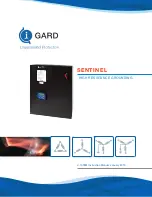
BE1-951
Application
8-57
SL-150TP=1,0; SL-150TN=1,0; SL-150TQ=1,0
SL-51P=1,0
SL-51N=1,/IN4
SL-51Q=1,/IN4
SL-151N=0,0
SL-27P=0,0
SL-59P=0,0; SL-59X=0,0
SL-47=0,0
SL-62=2,VO10,0
SL-162=0,0,0
SL-79=1,VO8,/IN1,VO12+VO14,/IN2
SL-81=1,0
SL-181=1,0
SL-281=1,/VO14
SL-381=1,/VO14
SL-481=0,0
SL-581=0,0
SL-BF=0,0,0
SL-GROUP=1,0,0,0,0,/0
SL-43=0
SL-143=0
SL-243=0
SL-343=0
SL-101=0
SL-VOA=0
SL-VO1=VO11+VO13
SL-VO2=79C
SL-VO3=/VO13
SL-VO4=ALMMIN
SL-VO5=ALMMAJ
SL-VO6=81T*181T
SL-VO7=281T*381T
SL-VO8=VO6+VO11
SL-VO9=/IN2
SL-VO10=/VO6*VO7*IN1*IN3
SL-VO11=50TPT+50TNT+50TQT+51PT+51NT+51QT
SL-VO12=51PPU+51NPU+51QPU
SL-VO13=VO6+VO14
SL-VO14=/VO10*VO13
SL-VO15=0
Close Circuit Monitor
While a close circuit monitor is not included in any of the preprogrammed logic schemes, this function may
be added by using a 62 function block and a contact sensing input (INX) to monitor the close circuit. The
logic for the close circuit monitor is shown in Figure 8-19. The output of the 62 protection block will close the
designated output contact (VOY) when an open breaker and open close circuit condition exists. The
S<g>-62 command is used to provide a 500 millisecond time delay to inhibit the momentary alarm that will
occur due to the timing differences between the two signals.
















































